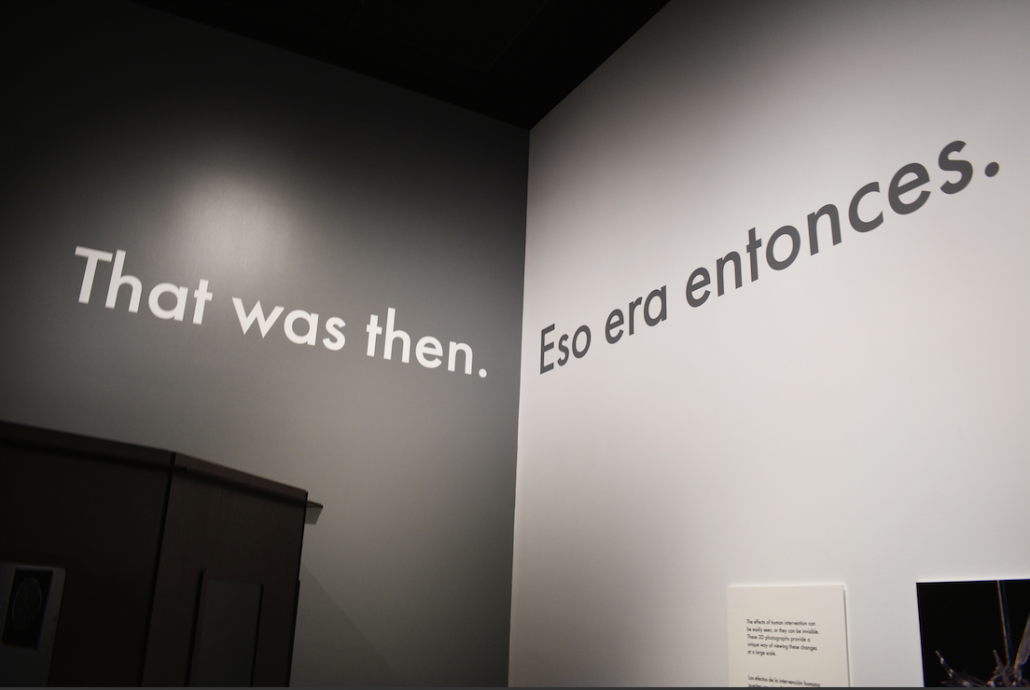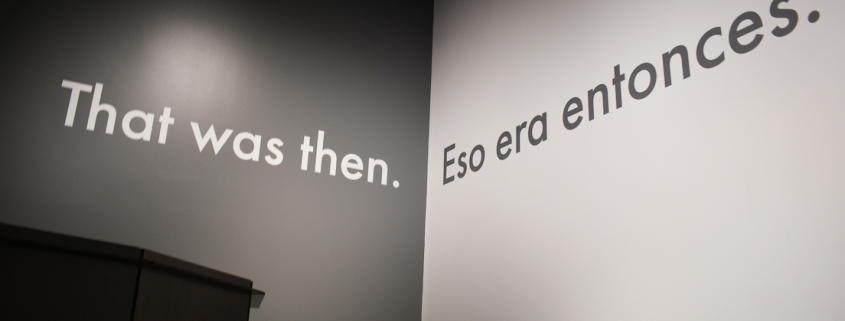Exhibit reflects mankind’s control over natural world

A visit to the Natural History Museum of Los Angeles conjures images of prehistoric creatures and brightly colored jewels.
However, the new exhibit, “That was then. This is now.,” opens a window into a different lens on history: The postnatural forms of organisms through change due to human alterations.
The artist, Richard Pell, a professor of media art at Carnegie Mellon university, specializes in research exploring how new technologies affect society.
Located in a small room between the central corridors and its 3-D theater, Pell’s latest exhibit presents his subjects through various mediums. Photographs hang on the back wall, depicting body parts, heads and skulls from numerous animal and plant species.
Dead organisms inside glass enclosures line the left and right sides of the exhibit. Spread throughout the room are large texts explaining the postnatural, combined with the dimly-lit specimen to create an eerie yet powerful atmosphere.
At first glance, the exhibit seems to emit a lifeless tranquility. The subjects appear frozen in time, stuck within their cases.
Some of the animals even have their eyes open, reinforcing the ominous aura permeating the exhibit. Others evoke fear. One of the jars contained a hairless and overweight rat. Everything seems unsettling, so much so that some visitors avoid looking at them at all.
However, upon further inspection, the technique Pell employs to bring the pieces to life becomes apparent. Antique telephones placed below each specimen allow visitors to listen to auditory explanations of historical experiments.
The short two- to three-minute stories delve into topics that ranged from educational tales to humorous factoids. Some of the narratives focused on the human desire to protect itself from the unknown, which eventually lead to scientific discoveries, featuring rats that helped develop alcohol addiction treatment and genetically modified mosquitoes that cannot carry the dengue fever virus. Other examples are more whimsical, such as photosynthetic bacteria that spelled out phrases such as “Hello World” by using a specialized light source.
The photographs on the back wall offer another unique viewing method, using 3-D glasses to showcase the subject matter.
Visitors are encouraged to don tinted glasses to reveal details in these representations.
Deformations in an alligator’s skull and spider silk inside goat tissue become visible and appear to jump off the canvas.
Through the pictures, one can easily spot the alterations, and human manipulation shines because of their “superior power,” a term the artist uses to describe his work.
Another example of man’s control over the natural world is the Birmingham roller pigeon specimen.
When visitors pull the telephone below the specimen to listen, a lifeless bird spins in circles inside a glass box.
This simple installation, along with the narrative, highlights the absurdity of the power humans have over other beings. Humans specifically bred the birds to enhance their ability to perform rapid backward somersaults while flying, a trait that has no purpose for the pigeons and exists solely for human entertainment and commercial value.
While the exhibit is confined between the walls of a small space, “That was then. This is now.” holds a larger message of how human intentions affect the way the world evolves. The works provide an informal and insightful way to discuss how humans have altered the world through processes such as selective breeding and genetic engineering.
Touching on both the positives and negatives, Pell showcases the fascinating and horrifying ways organisms both benefit from and are harmed by human interactions.
The exhibit will run at NHMLA through April 28. Admission is free for USC students, staff and faculty with a valid USC ID.

